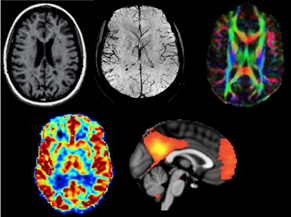The Diagnostic Imaging Sciences Center (DISC) Magnetic Resonance Research Laboratory
Purpose
MRI Research
Description
To provide advanced support for cutting-edge MRI research.
Type
The Diagnostic Imaging Sciences Center (DISC) Magnetic Resonance Research Laboratory provides state-of-the-art MRI facilities and related technical expertise to researchers at and outside the University of Washington. It is a self-supported cost-center currently supporting over 10 departments within the university and industry projects with more than 80 research studies in neural, cardiac, pelvic, fetal, and extremity imaging.
The cornerstone of the DISC Lab is the Philips Ingenia Elition X 3T MRI system, capable of advanced structural and functional imaging as well as spectroscopy for human, animal, and phantom studies. The magnet has a 70cm bore and is equipped with a multi-transmit capable body coil and Philips Vega HP gradients which deliver a maximum amplitude of 45mT/m (slew rate 220 T/m/s). Current scanner software version R5.6.
Services provided at the DISC MRRL include but are not limited to
- Access to latest image acquisition approaches
- One-on-one consultation for research projects
- Development of new pulse sequences and project-specific examcards or protocols
- Development of functional stimulus paradigms and related equipment
- Design and construction of custom hardware, like RF coils, electronics fabrication, gradient coil development, and unique magnet-compatible sensors.
- MR data storage and backup options
- Research/investigator training to acquaint with imaging, monitoring devices, stimulus paradigm, and other ancillary equipment
- Safety training and Research Coordinator training for operations near MR Suite
Keywords: General
Medical Imaging, MRI, brain, pelvic imaging, body imaging,diagnostic, vessel, cardiac, neuro
Keywords: Specific
Pulse sequence development, fMRI, BOLD, DTI, ASL, T1, task, RF coil, ex vivo in vivo, flair, in addition to visual, auditory and tactile stimulus
